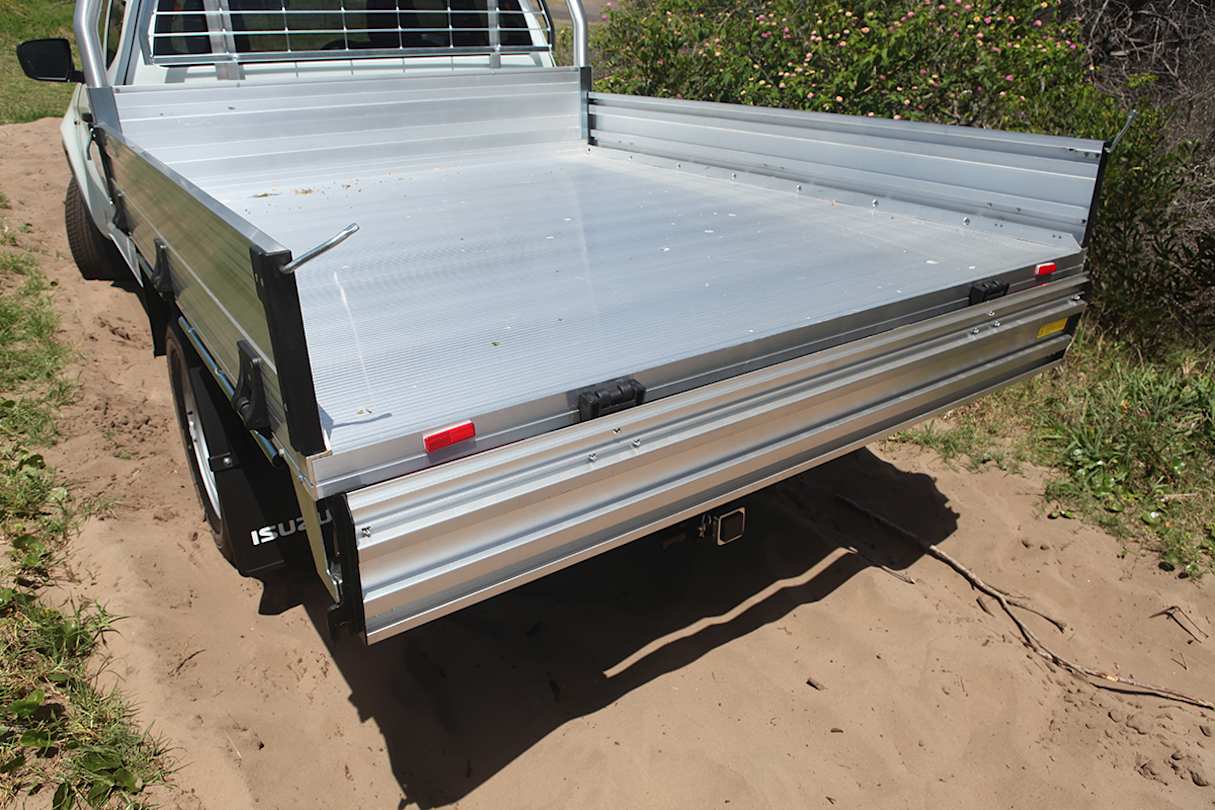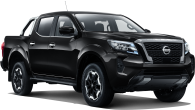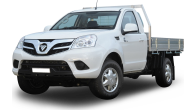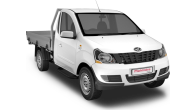Utes – especially dual-cab utes – occupy the hallowed turf that lay between being purely a work vehicle and being a daily driver/recreational vehicle. But in attempting to strike the right balance between the two purposes, utes end up being a bit of a compromise in one direction or the other – as in it’s ultimately better suited to work duties than it is to being a people mover, or vice-versa.
Well, some utes don’t need to compromise all that much, because some utes, such as the Isuzu D-Max SX space-cab cab chassis, for instance, are unashamedly purpose-built for work: carrying loads, driving big distances, towing heavy trailers, doing long days.
But that doesn’t mean this sort of ute is not capable of taking on an adventure or two, especially when the ute in question is a 2021 4x4 version of the aforementioned D-Max variant.
So, how does it go? Read on.
Isuzu D-MAX 2021: Sx (4X2)
| Engine Type | Diesel Turbo 4, 3.0L |
|---|---|
| Fuel Type | Diesel |
| Fuel Efficiency | 8.0L/100km (combined) |
| Seating | 2 |
| Price From | $22,440 - $27,720 |
| Safety Rating |
|
Does it represent good value for the price? What features does it come with?
The Isuzu D-Max SX space cab chassis 4x4 auto has a manufacturer suggested retail price (MSRP) of $45,700. SX is the entry-level spec for the D-Max line-up.

Standard features include 7.0-inch multimedia display (with Apple CarPlay (wireless) and Android Auto (USB) and voice recognition), halogen headlights, auto headlights and auto high-beam lights, auto wipers, tilt and reach adjustable steering, rear wing space cab doors, as well as 17-inch steel wheels, vinyl flooring, cloth seat trim, a reversing camera, and air-conditioning.
Safety gear is plentiful and includes eight airbags, AEB (with pedestrian and cyclist detection), lane keeping assistance, blind spot monitoring, rear cross traffic alert, front turn assist, driver attention assist.

The D-max has a maximum five-star ANCAP crash-test safety rating.
Our test vehicle costs more than a standard example because it has the heavy-duty alloy tray ($2567, including fitting), towbar with seven-pin-plug ($1199, including fitting), and an electric brake controller ($820, including fitting). Isuzu calculates on-road costs (registration, CTP, stamp duty, delivery etc) to be $4309. So, the actual price as tested for this vehicle is $52,576, drive away.
Paint choices include Mineral White, Cobalt Blue mica, Basalt Black mica, Mercury Silver metallic, and Obsidian Grey mica. Any metallic paint option costs $500.
Is there anything interesting about its design?
Plenty, if you get your jollies out of utes. And, admit, it, there are a fair few of us out there.
But let’s stick to the essentials.

This D-Max has the new-generation ‘double vampire fangs’ front end, which is a bit of a ‘like it or don’t like it’ kind of proposition.
But it’s the rear on this D-Max that’s most interesting. Because rather than a tub/pick-up style back end, this D-Max has a heavy-duty alloy tray, which costs $2567 (RRP, including fitting). This tray is one of five available, including economy, general purpose, heavy duty (steel), and mine specification (steel).
This heavy duty tray has a built-in rear-window guard/protector and a top rail on the tray headboard that has a claimed 150kg load rating.
The cabin is, in keeping with the entry-entry-level SX mode, on the basic side of ‘basic’, lending itself appropriately to the rough and tumble of everyday life, including work and play.

What are the key stats for the engine and transmission?
This D-Max has the range’s new tweaked 3.0-litre four-cylinder turbo-diesel engine, which produces 140kW at 3600 rpm and 450Nm at 1600-2600rpm.
It has a six-speed automatic transmission and a dual-range transfer case with high- and low-range gearing. It also has a recalibrated off-road traction control system and – sound the trumpets! – a rear differential lock.

How practical is the space inside?
The SX cabin is a space well suited to work. It’s basic but without being spartan; it’s comfortable without being plush.
The flooring is vinyl, the seat trim is cloth, and there’s an abundance of hard plastics. All of that’s fine with me, but you may have a problem with the paucity of modern comforts and conveniences.
The 7.0-inch display is quite a bit smaller than the 9.0-inch unit that’s in some more expensive variants. It looks a bit odd, with such a thick border of ‘screen nothing’ around it, and it’s also fiddly to operate on the move.

Controls elsewhere are easy enough to use – temperature, fan direction and speed are all big dials – but there are a few dummy buttons around, just to rub in the fact that you’re not driving a higher-spec D-Max, as if you care.
In terms of storage there is a shallow tray in front of the shifter, cupholders between driver and front-seat passenger, a centre console, and pop-out cupholders under the outboard air vents.
There is a USB port and a 12V socket.
The rear wing doors allow for easy enough access – to throw in gear etc – and the rear bench has shallow storage spaces underneath.
What's it like as a daily driver?
It’s actually pretty decent for an extra cab/space cab ute. Traditionally, these utes, in which the tray size is the priority over cabin space, have offered very average overall ride and handling, because they’ve simply not been set up to exhibit those characteristics. In the past, these utes have been engineered to handle large payloads comfortably, not to actually be comfortable.

Well, that’s changed quite dramatically with this latest revised D-Max line-up. The new dual-cab variants offer quite car-like on-road manners, and while the space cab has certainly improved over previous iterations, it’s not quite at car-like levels of driving assurance yet. But that’s the nature of the load-focussed beast, because it is on load-carrying leaf springs at the rear afterall.
There’s a fair bit of in-cabin noise, mostly diesel engine clatter, and the unladen space-cab D-Max yields a jittery ride, skipping around merrily as this ute traverses surfaces with even slight imperfections.
But, as always, if you expect stable, composed ride and handling in an unladen ute that’s mostly a tray, then you ought to take a long hard look at yourself.
In most other aspects, this D-Max is right up there with the best in this realm, and you certainly can’t fault it in terms of what it offers in pure drivability, functionality and safety tech.
What's it like for touring?
While a space cab D-Max may seem like it’s purpose-built for hard work rather than play, the 4x4 variants can be used as very effective off-road tourers.
The optional heavy-duty alloy tray on this feels solid, has sturdy rubberised hinges and – at 2100mm long and 1777mm wide at floor height – offers plenty of load space for camping gear, supplies and recreational equipment. Payload is listed as 1240kg, which is decent if you’re two-up and looking to stack your gear in for a few days away. And don’t forget the small space behind the driver and front-seat passenger which could cope with more than a few soft bags and there is also small storage spots under what would be the seats in a dual-cab.

Unbraked towing capacity is 750kg, while braked towing capacity is 3500kg, so it’s on a par with others in the ute realm. It is rated to cop a maximum of 350kg on the towball, as long as that lowball is part of a genuine Isuzu ute tow kit.
There’s a fair bit of unsprung weight in this D-Max’s steel wheels, but they do add to the ute’s utilitarian presence and – bonus – if they’re bent out of shape while you’re out bush, you can at least bash some sense into them.
It’s riding on Dunlop Grandtrek AT25 (255/65 R17) tyres, which are fine for light- to medium-duty off-roading, i.e. for well-maintained tracks in dry weather, to not-so-well-maintained tracks in poorer conditions.
This D-Max has 235mm of ground clearance (some other D-Max variants get a listed 240mm), and it has approach, departure and ramp-over angles of 30, 27, and 23.9 degrees. Now, those figures will mean nothing to you if you’re not familiar with their importance but, rest assured, those are decent numbers when it comes to real-world application of this D-Max’s drivability over rough terrain.
Its wading depth is claimed to be 800mm but, on this occasion, we never went through any water that was anywhere near that depth – not enough rain about – but we have driven the D-Max through water crossings and muddles in the past and have never had any strife.

Off-road traction control has been tweaked for the new generation D-Max – and that change definitely shows. It was a bit lacklustre in previous iterations, but that underperformance has been recalibrated out of it and it’s now a quietly reliable system as it is.
Switching between 2H (two-wheel drive high range), 4H (four-wheel drive high range), and 4L (four-wheel drive low range) is simply a matter of turning the dial just in front of the auto shifter. The driver is able to switch from 2H to 4H on the move at speeds of up to 100km/h.
The big news is now the D-Max has a rear diff lock as standard and that additional tool in this ute’s box of tricks adds another dimension to its off-roading capabilities.
The diff lock can be engaged at speeds up to 8km/h and only when you're in four-wheel drive low-range (4L). It will disengage when you hit 30km/h or more. Note: when you engage the diff lock, off-road traction control is disengaged.
For those of you interested, GVM (gross vehicle mass) is 3100kg, and GCM (gross combined mass) is 5950kg.
How much fuel does it consume?
It has a claimed fuel consumption of 8.0L/100km. The dash-indicated figure was 8.9L/100km, but I recorded an actual fuel consumption on test of 9.2L/100km.
The D-Max has a 76-litre fuel tank.
Warranty & Safety Rating
What safety equipment is fitted? What safety rating?
The D-Max range has achieved a maximum 5-star ANCAP safety rating in 2020. The line-up is one of the best-equipped ute ranges on the market.

Every D-Max has Isuzu's Intelligent Driver Assistance System (IDAS), which includes such driver-assist tech as AEB (which works at speeds more than 10km/h), electronic lane departure prevention, traffic sign recognition, and a reversing camera.
This variant also has eight airbags, blind spot monitoring, rear cross traffic alert, front turn assist, driver attention assist, hill descent control and more.
What does it cost to own? What warranty is offered?
A six-year/150,000km warranty applies to this D-Max. Servicing intervals are set at 15,000km/12 month intervals. Capped priced servicing costs are $389, $409, $609, $509, $299, $749 and $409, costing a total of $3373 over the period.
A new D-Max owner also gets no-cost, seven-year roadside-assistance cover.
Verdict
The D-Max is much better than it’s ever been. In the realm of space cab ute variants, which are traditionally engineered for job-site duties with few concessions to comfort and safety, the D-Max has moved the whole market forward a great deal – if it’s not the king of these work utes, it’s pretty bloody close.
Even in space-cab form, this is a nice-driving utility and as a daily vehicle of choice, it’s not an unpleasant option. It’s still a purpose-built work vehicle, sure, and in space-cab guise it is comfortably so, but it’s so good in most other respects that it effectively shrugs off any job-site shackles and offers a formidable proposition as a work-and-play all-rounder for perhaps a couple and their dogs.
Pricing Guides









.jpg)
.jpg)










.jpg)



